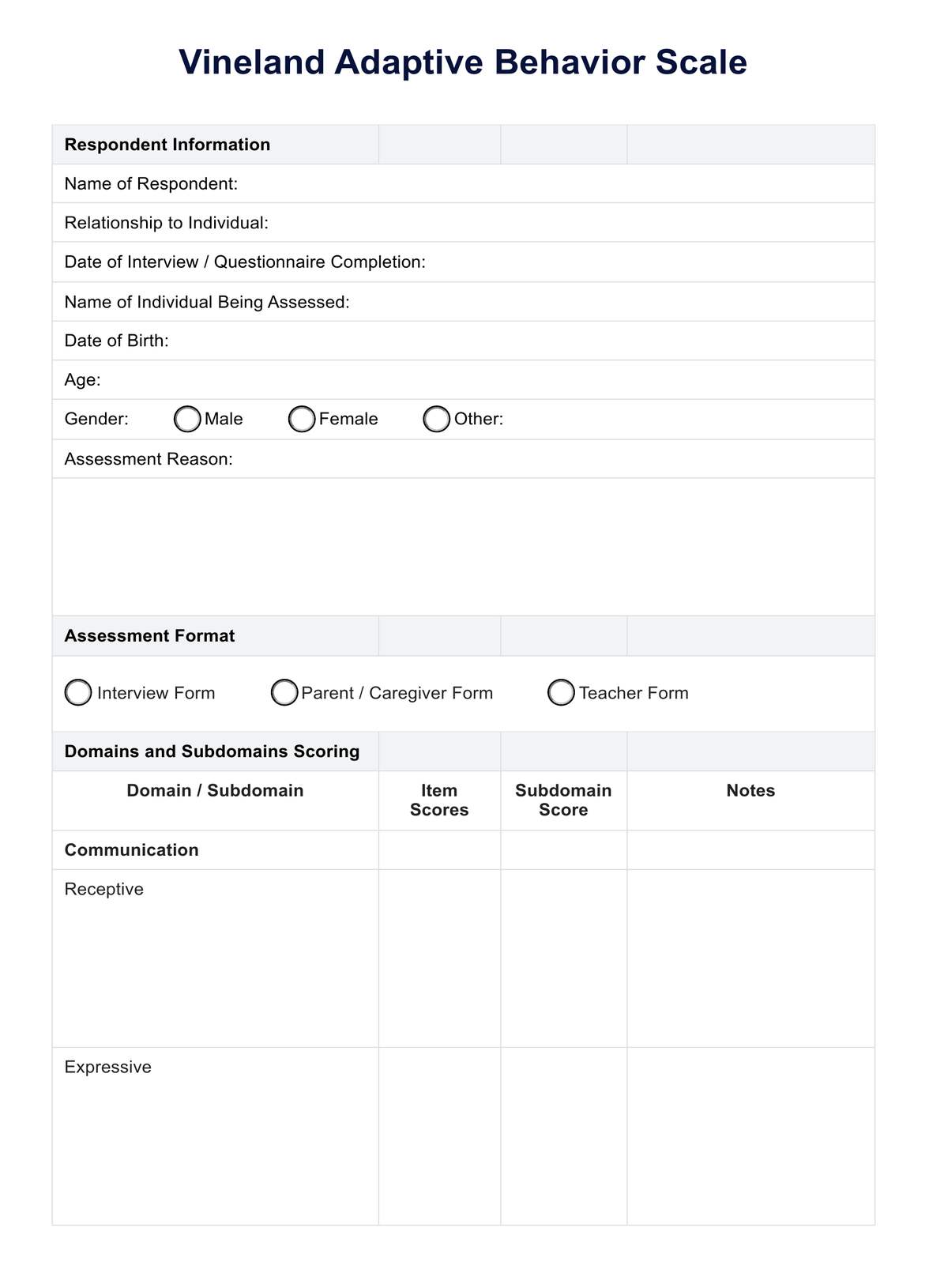This scale is versatile and can assess individuals of all ages, from infants to adults, who may have developmental, cognitive, or emotional challenges. It's particularly helpful in diagnosing and understanding the abilities of those with developmental disabilities, autism spectrum disorders, and other intellectual and developmental disabilities.

Vineland Adaptive Behavior Scale
Learn more about the comprehensive Vineland Adaptive Behavior Scale, which assesses adaptive behaviors in individuals and provides targeted support.
Vineland Adaptive Behavior Scale Template
Commonly asked questions
The scale can be administered through interviews with caregivers or teachers, or by self-report for older children and adults. It offers various forms, including parent/caregiver interviews and teacher rating forms, to accommodate different assessment needs.
The results can inform treatment planning, educational placements, and intervention strategies. Professionals can tailor support to promote independence and social integration by identifying strengths and areas for improvement.
EHR and practice management software
Get started for free
*No credit card required
Free
$0/usd
Unlimited clients
Telehealth
1GB of storage
Client portal text
Automated billing and online payments











